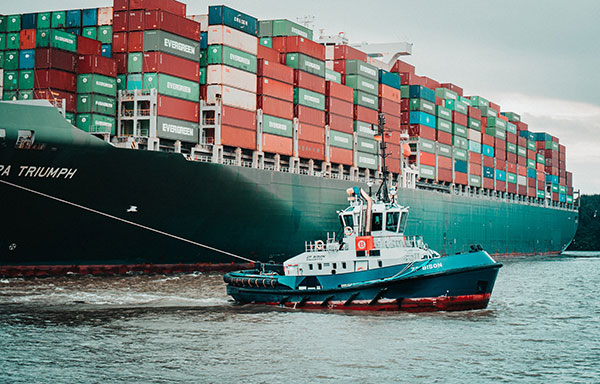How U.S. manufacturers can rebound from global economic and supply challenges by reshoring their operations with advanced technology.
By Maggie Slowik, Global Industry Director for Manufacturing, IFS
Manufacturers have struggled to operate at full capacity since the pandemic due to skill shortages, supply chain issues, and geopolitical headaches. To mitigate these issues, manufacturers and logistic providers are beginning to re-shore operations and work more in-house. Here, Maggie Slowik, Global Industry Director for Manufacturing at IFS, analyzes how a return closer to home can help manufacturing supply chains recover.
The key aim of reshoring is to establish complete control over the entire supply chain by bringing manufacturing operations back to the country of origin. It’s become a commercial reality, with companies around the world deciding to make this shift – and they’re not alone. In North America, many businesses have started to move on from globalization as default, with around 350,000 jobs being re-shored to the U.S. in 2022 – an increase of nearly 100,000 when compared to 2021 figures.
Economies across the world have started to establish a roadmap aiming to balance supply chains and increase resilience, with some companies already investing in building plants in Vietnam and India. Supply chain gaps, greater self-sufficiency requirements, and unpredictable geopolitical climates are the reasons behind this reshoring return according to the Reshoring Initiative® 1H 2022 Data Report. The National Development Strategy and Coordination Bill has also driven the national movement to improve supply chains and domestic manufacturers as it emphasizes the effect manufacturing reshoring can have on the development of the national economy throughout 2023.

Recent research commissioned by IFS, polling senior decision-makers working for large enterprises globally, found that 72% now use domestic suppliers. From a sustainability angle, there are many benefits to be gained from this shift. For instance, reshoring can minimize Co2 emissions as transport is reduced, and spur a deduction in wasteful overproduction as supply chains are brought closer together, helping towards worldwide net-zero goals.
But the raw materials, components, and products that manufacturers source from suppliers are likely to become more expensive, especially as inflation rises globally. As a result, 53% have considered increasing the proportion of materials/components they produce in-house but this could add cost, complexity, and additional waste to the supply chain.
Reshoring is not a fix all solution, often companies can underestimate the sheer level of effort, costs, and logistical planning required for reshoring success. But for many U.S. companies, the extra costs to manufacture within the country are definitely outweighed by saved customs and shipping costs, and the additional sustainability benefits associated with offshore operations.
In fact, it can be a key facilitator for solving an organization’s supply chain, labor, and production challenges associated with reshoring. For 94% of respondents in a recent McKinsey study, Industry 4.0 helped keep operations running during the pandemic, with another 56% claiming Industry 4.0 technologies had been critical for efficient responses. A new IDC InfoBrief, shows an active correlation between digital maturity and profit—manufacturers reporting an optimized level of digital transformation saw profits increase by 40%.
The technology is there. Technology can help solve business conundrums to deliver agile, fast time to insight (TTI) that manufacturers need to better forecast demand and provide a more detailed view of sustainability across product supply chains. The IFS study showed supply chain management is now seen by 37% of respondents as a top priority which their organization is trying to solve through technology investment.
Reshoring and foreign direct investment (FDI) jobs are the highest ever due to the emphasis placed on the domestic U.S. supply of essential goods according to the U.S. Reshoring Initiative. Research shows there are profitable and supply chain benefits for manufacturers to gain with 83% of U.S. consumers willing to pay 20% more for product manufactured in America and 57% saying the country a product is made in would influence their purchasing decision.
Manufacturing operations in one location allows for greater control over processes while IoT, AI, and Machine learning take care of monotonous tasks. Manufacturers also gain shorter supply chains and on-site teams will experience increase collaboration on a day-to-day level, as reshoring reduces the time differences between plants.
The immediate and long-term benefits are obvious for manufacturers that address reshoring now, but they must use the right technology, efficiently and cost-effectively. Of course, like any transition there will be bumps in the road, but long-term employment and overall control results of reshoring will make the journey worthwhile. As reshoring becomes a manufacturing worldwide trend, businesses will need guidance from agile and flexible software.

Maggie is a Global Industry Director for Manufacturing, supporting customers on their strategic business needs. Prior to IFS, she was a manufacturing analyst at IDC for nearly 5 years, working with both global software providers and manufacturers to help assess, define and drive digital transformation initiatives. Previous roles include advisory work with supply chain C-suite members on topics including sustainability, supply chain risk and technology selection.
In this episode, I sat down with Beejan Giga, Director | Partner and Caleb Emerson, Senior Results Manager at Carpedia International. We discussed the insights behind their recent Industry Today article, “Thinking Three Moves Ahead” and together we explored how manufacturers can plan more strategically, align with their suppliers, and build the operational discipline needed to support intentional, sustainable growth. It was a conversation packed with practical perspectives on navigating a fast-changing industry landscape.